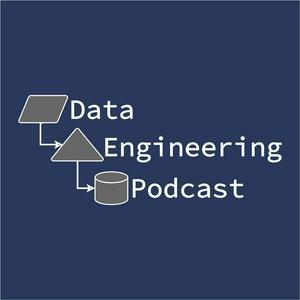SummaryIn this episode of the Data Engineering Podcast Derek Collison, creator of NATS and CEO of Synadia, talks about the evolution and capabilities of NATS as a multi-paradigm connectivity layer for distributed applications. Derek discusses the challenges and solutions in building distributed systems, and highlights the unique features of NATS that differentiate it from other messaging systems. He delves into the architectural decisions behind NATS, including its ability to handle high-speed global microservices, support for edge computing, and integration with Jetstream for data persistence, and explores the role of NATS in modern data management and its use cases in industries like manufacturing and connected vehicles.AnnouncementsHello and welcome to the Data Engineering Podcast, the show about modern data managementData migrations are brutal. They drag on for months—sometimes years—burning through resources and crushing team morale. Datafold's AI-powered Migration Agent changes all that. Their unique combination of AI code translation and automated data validation has helped companies complete migrations up to 10 times faster than manual approaches. And they're so confident in their solution, they'll actually guarantee your timeline in writing. Ready to turn your year-long migration into weeks? Visit dataengineeringpodcast.com/datafold today for the details.Your host is Tobias Macey and today I'm interviewing Derek Collison about NATS, a multi-paradigm connectivity layer for distributed applications.InterviewIntroductionHow did you get involved in the area of data management?Can you describe what NATS is and the story behind it?How have your experiences in past roles (cloud foundry, TIBCO messaging systems) informed the core principles of NATS?What other sources of inspiration have you drawn on in the design and evolution of NATS? (e.g. Kafka, RabbitMQ, etc.)There are several patterns and abstractions that NATS can support, many of which overlap with other well-regarded technologies. When designing a system or service, what are the heuristics that should be used to determine whether NATS should act as a replacement or addition to those capabilities? (e.g. considerations of scale, speed, ecosystem compatibility, etc.)There is often a divide in the technologies and architecture used between operational/user-facing applications and data systems. How does the unification of multiple messaging patterns in NATS shift the ways that teams think about the relationship between these use cases?How does the shared communication layer of NATS with multiple protocol and pattern adaptaters reduce the need to replicate data and logic across application and data layers?Can you describe how the core NATS system is architected?How have the design and goals of NATS evolved since you first started working on it?In the time since you first began writing NATS (~2012) there have been several evolutionary stages in both application and data implementation patterns. How have those shifts influenced the direction of the NATS project and its ecosystem?For teams who have an existing architecture, what are some of the patterns for adoption of NATS that allow them to augment or migrate their capabilities?What are some of the ecosystem investments that you and your team have made to ease the adoption and integration of NATS?What are the most interesting, innovative, or unexpected ways that you have seen NATS used?What are the most interesting, unexpected, or challenging lessons that you have learned while working on NATS?When is NATS the wrong choice?What do you have planned for the future of NATS?Contact InfoGitHubLinkedInParting QuestionFrom your perspective, what is the biggest gap in the tooling or technology for data management today?Closing AnnouncementsThank you for listening! Don't forget to check out our other shows. Podcast.__init__ covers the Python language, its community, and the innovative ways it is being used. The AI Engineering Podcast is your guide to the fast-moving world of building AI systems.Visit the site to subscribe to the show, sign up for the mailing list, and read the show notes.If you've learned something or tried out a project from the show then tell us about it! Email
[email protected] with your story.LinksNATSNATS JetStreamSynadiaCloud FoundryTIBCOApplied Physics Lab - Johns Hopkins UniversityCray SupercomputerRVCM Certified MessagingTIBCO ZMSIBM MQJMS == Java Message ServiceRabbitMQMongoDBNodeJSRedisAMQP == Advanced Message Queueing ProtocolPub/Sub PatternCircuit Breaker PatternZero MQAkamaiFastlyCDN == Content Delivery NetworkAt Most OnceAt Least OnceExactly OnceAWS KinesisMemcachedSQSSegmentRudderstackPodcast EpisodeDLQ == Dead Letter QueueMQTT == Message Queueing Telemetry TransportNATS Kafka Bridge10BaseT NetworkWeb AssemblyRedPandaPodcast EpisodePulsar FunctionsmTLSAuthZ (Authorization)AuthN (Authentication)NATS Auth CalloutsOPA == Open Policy AgentRAG == Retrieval Augmented GenerationAI Engineering Podcast EpisodeHome AssistantPodcast.__init__ EpisodeTailscaleOllamaCDC == Change Data CapturegRPCThe intro and outro music is from The Hug by The Freak Fandango Orchestra / CC BY-SA
